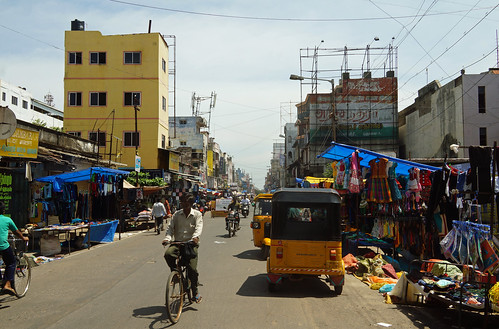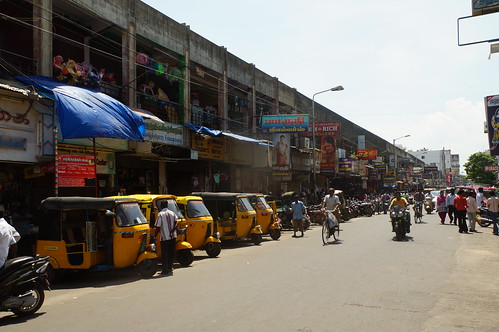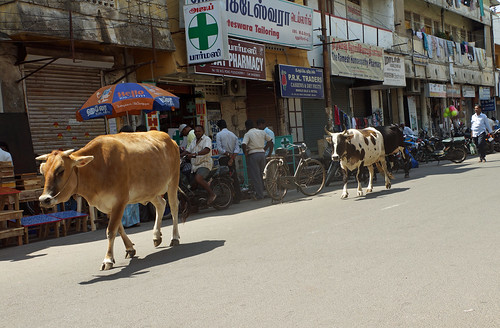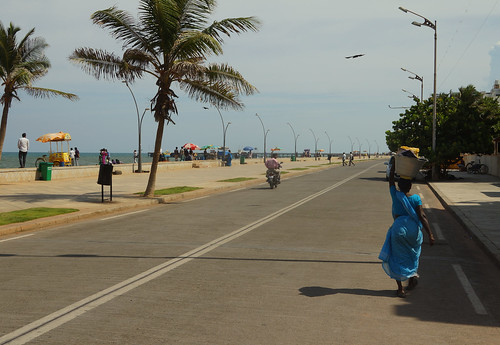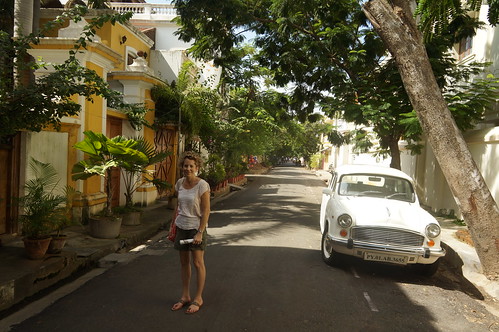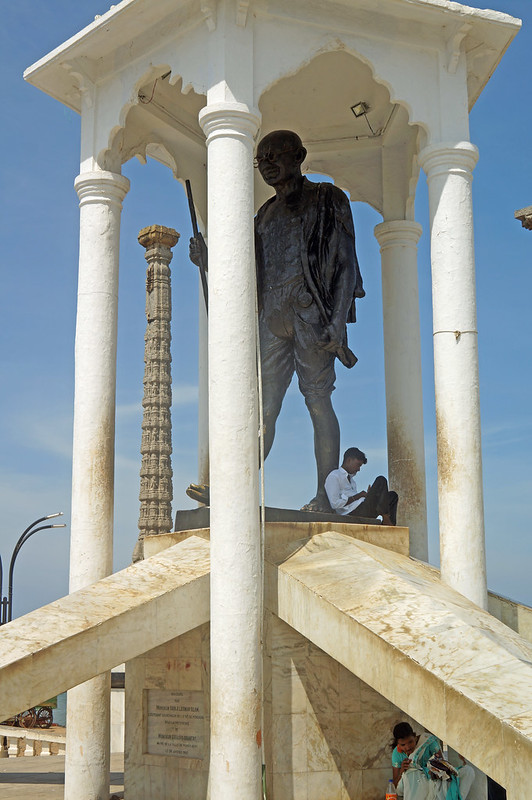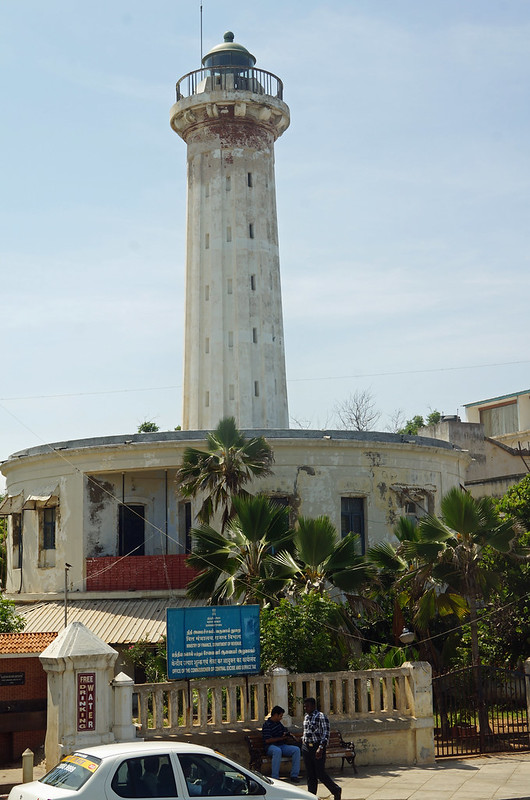Although it has been correctly known as “Puducherry” since 2006, even the tourist brochures continue to refer to this southern Indian city as Pondicherry. Formerly the nucleus of “French India” – the French controlled this area for 280 years – the city and the region around it formally joined the rest of independent (in 1947) India in 1954. Nearly three centuries of European occupation are clearly visible in the city, as they are in many other parts of India.
And the city is a little bit divided along pre-independence lines. The editorial in a tourist brochure we picked up reads:
“Pondicherry is a charming little town filled with history, spirituality, French heritage, beautiful beaches, calm & well planned white town streetcapes, handicrafts and unique life style. Pondicherry is divided into quiet & tranquil white town and active Indian town wherein the architecture & streetscapes completely differs.
The Wikipedia entry for the city explains that:
“the town is divided into two sections: the French Quarter ( Ville Blanche or ‘White town’) and the Indian quarter (Ville Noire or ‘Black Town’.) Many streets still retain their French names, and French style villas are a common sight. In the French quarter, the buildings are typically colonial style with long compounds and stately walls. The Indian quarter consists of houses lined with verandas and houses with large doors and grills. These French and Indian style houses are identified and their architecture is preserved from destruction by an organization named INTACH. The use of the French language can still be seen and heard in Pondicherry.
Although from an American perspective, that description may contain a bit of political incorrectness, in practice it was clear to see what they were talking about. We stepped out of the “auto rickshaw” in the city center and in the midst of a Sunday market that was a riot of traffic, people, noise and smells.
In the so-called “French Quarter,” the atmosphere was much more “tranquil” (you have to pronounce it the French way) – the pace was slower, crowds were smaller, and the architecture was completely different. People were enjoying the breeze along the “beach” (covered with stones) and an occasional tourist was spotted along the quiet lanes of the quarter.
It can be said, however, that some of the buildings had seen better days:
Prominent along the seafront are a huge statue of Gandhi and the city’s lighthouse:
These workmen took advantage of the quiet atmosphere in the French quarter to catch a snooze – something which would have been impossible, I would guess, in the other part of town:
And farther down the street, we ran into a film crew busily preparing a set for filming. We stopped in a nearby cafe, the “Cafe des Arts” and browsed a bit through the attached art shop. And started chatting with the proprietor and one of his guests. And were quite surprised to find that the guest had been in our Chennai home three years earlier, at a party being hosted by a previous occupant!
It really is a small world.
We’ll definitely be heading back to Pondi-/Puducherry, close as it is to Chennai. Having visited on a Sunday, many of the shops were closed – including the antique/”junk” shops we had been recommended.

